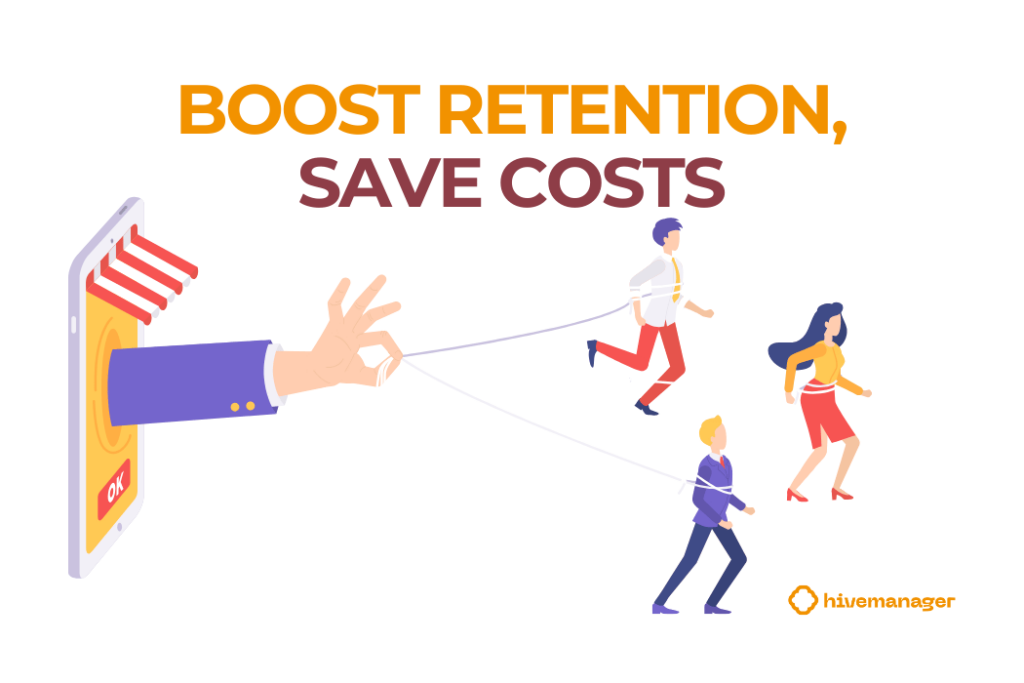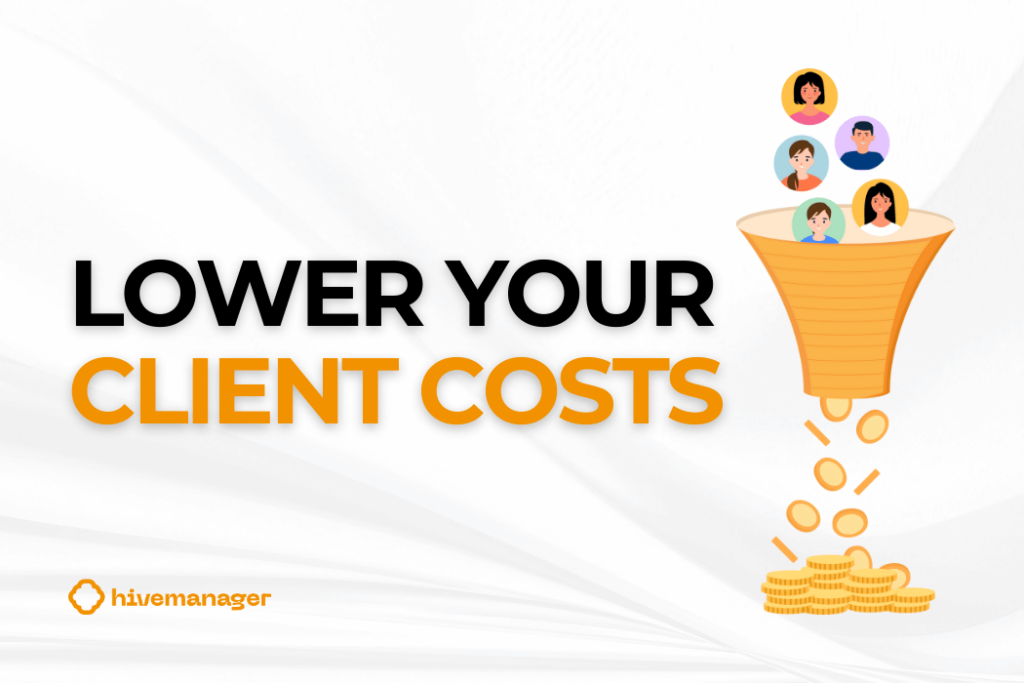Strategic Approaches to Lower Client Acquisition Costs and Boost Profitability
In a competitive market like massage therapy, managing costs effectively is crucial for maintaining profitability and ensuring long-term sustainability. One of the most significant challenges faced by clinic owners is controlling the Customer Acquisition Cost (CAC)—the amount spent to attract each new client, covering marketing, advertising, and promotional efforts. As digital advertising costs rise and competition intensifies, the need to optimize these expenses becomes increasingly important. A high CAC can quickly erode profit margins, making it essential to acquire clients in a cost-efficient manner.
Clinic owners need to adopt data-driven strategies to identify the most effective marketing channels and refine their approach. This means not only tracking which platforms deliver the best results but also ensuring that each client interaction adds value, whether through a streamlined booking process, personalized follow-ups, or referral programs. Implementing these tactics can shift the focus from merely increasing the client base to building lasting relationships, which boosts retention rates and improves lifetime value.
By developing a strategy that includes both client acquisition and retention, clinics can achieve balanced growth. In this article, we explore actionable strategies to reduce your CAC, enhance client loyalty, and ultimately increase your clinic’s revenue without sacrificing quality or customer satisfaction.
What is Customer Acquisition Cost (CAC) and Why It Matters
Defining CAC and Its Importance
Customer Acquisition Cost (CAC) represents the total expenditure required to attract a new client to your business. This includes spending on marketing, advertising, promotions, and other outreach efforts. For massage therapy clinics, where profit margins can be thin due to operational costs and competitive pricing, keeping CAC under control is vital. A high CAC can quickly diminish the net revenue from each new client, making it difficult to achieve sustainable growth and potentially putting the business at financial risk.
Understanding your CAC helps you make better decisions about how to allocate your marketing budget. For example, if one channel is delivering new clients at a lower CAC, it may be worth concentrating efforts there while scaling back on less effective platforms. This ensures that every dollar spent on client acquisition is used efficiently, helping your clinic maintain a strong return on investment (ROI).
The Impact of High CAC
If you’re struggling to attract new clients or noticing that advertising costs are eating into your profits, you’re not alone. Many clinic owners face this challenge, especially with rising digital advertising costs and increasing competition. A high CAC can mean spending more on acquiring clients than they bring in, ultimately harming profitability. The key to overcoming this challenge is to balance your CAC with the Customer Lifetime Value (CLV)—the total revenue you expect from a client over their relationship with your clinic.
A sustainable CAC means that you’re not just acquiring clients but doing so in a way that allows your business to thrive long-term. By reducing CAC through strategies like referral programs and improving conversion rates, you can maximize the value of each new client while keeping acquisition costs in check. This approach ensures that your business isn’t just growing but doing so profitably, allowing you to reinvest in services, improve client experiences, and achieve long-term success.
Calculate Your Current CAC to Identify Inefficiencies
Formula for CAC
To start optimizing, you need to know where you stand. The formula for calculating CAC is simple:
Customer Acquisition Cost (CAC) = Σ Sales and Marketing (S&M) Expenses ÷ Number of New Customers Acquired
Benchmarking Your CAC for Massage Therapy Clinics
When evaluating your CAC for a massage therapy clinic, it’s essential to understand how these costs compare to industry standards. CACs in the massage therapy sector tend to be higher than in industries like e-commerce due to the personalized nature of the service. The average CAC for massage therapy typically ranges between $120 to $250 per new client. This higher range is due to the need for trust-building and personalized care, which requires more client education and engagement.
Massage therapy clinics often rely on targeted marketing methods such as Google Ads, local SEO, and community outreach to attract potential clients. These approaches are crucial for creating a localized presence and establishing credibility in a competitive market, but they can come with a higher price tag due to competition for local ad placements and the effort needed to build a trusted reputation.
Achieving a Balanced CAC-to-CLV Ratio
For massage therapy businesses, aiming for an LTV-to-CAC ratio of 3:1 is a good rule of thumb. This means that the revenue from each client should be at least three times the cost of acquiring them. Maintaining this ratio ensures that your marketing investments yield positive returns, allowing your clinic to grow sustainably.
Why Tracking Matters

Regularly tracking your CAC is essential for several reasons. It helps you identify which marketing strategies are most effective, allowing you to invest more in high-performing channels and cut back on those that aren’t delivering. For example, tracking the CAC of different campaigns might reveal that social media ads are bringing in new clients more cost-effectively than local print ads, guiding your budget towards more impactful strategies.
Tracking also helps you identify inefficiencies and make data-driven adjustments quickly. If you notice a spike in your CAC, it may indicate that a particular ad campaign is underperforming or that changes in the local market are affecting your costs. By identifying these trends early, you can refine your approach, such as adjusting ad targeting or offering special promotions to improve conversion rates. Monitoring your CAC also ensures that you maintain a healthy balance with your CLV, helping you achieve sustainable growth without overspending.
For massage therapy clinics, managing CAC relative to the lifetime value of a client is crucial. A sustainable approach involves not only acquiring new clients but also retaining them through excellent service, follow-up offers, and loyalty programs. This balanced strategy can help reduce the pressure on constantly acquiring new clients, leading to lower overall costs and higher profitability. If your CAC is higher than industry benchmarks, it’s a signal to reassess and optimize your marketing strategies to ensure long-term success.
Optimize Your Marketing Channels for Maximum Impact
Identify and Focus on High-ROI Channels
Use analytics tools to determine which channels—such as Google Ads, social media, or email marketing—are bringing in the most clients at the lowest cost. Focus on these high-performing channels and scale back on those that aren’t delivering.
Leverage Organic Marketing
Invest in organic strategies like search engine optimization (SEO) and content marketing. Creating blog posts, videos, or social media content that addresses client pain points can attract new clients without direct advertising costs. For example, publishing articles on “benefits of massage therapy” can position your clinic as an expert, drawing in potential clients naturally.
Use Referral Programs to Lower CAC
The Power of Word-of-Mouth Marketing
Referrals are among the most cost-effective ways to attract new clients. Clients who come through referrals often convert faster and have a higher lifetime value. Referred clients tend to spend more and remain loyal longer.
Creating an Effective Referral Program
- Offer incentives like discounts on future services for both the referrer and the new client.
- Make the process easy with referral cards or digital codes that clients can share.
- Promote the referral program through email campaigns, social media, and in-clinic posters.
Improve Client Onboarding to Enhance Retention
Onboarding’s Role in Reducing CAC
A smooth onboarding experience can significantly impact client retention, turning first-time clients into repeat customers. This reduces the pressure on acquiring new clients, thereby lowering your overall CAC.
Streamline the Booking Process
Make it easy for new clients to book their first appointment by offering online booking options and a user-friendly website. A seamless booking process helps prevent drop-offs during the customer journey.
Educational Content to Build Trust
Provide educational resources during onboarding, such as tips for preparing for their first massage or the benefits of different massage types. This positions your clinic as an expert and builds trust with clients, increasing their likelihood of returning.

Boost Conversion Rates to Lower Your CAC
Optimizing Your Landing Pages
A well-designed landing page can make or break your conversion rates. Use testimonials, clear calls-to-action, and content that speaks directly to client needs. This helps turn website visitors into paying clients.
Simplify the Booking Process
Complex or lengthy booking processes can deter potential clients. Keep forms short, ask for essential information only, and ensure a smooth user experience. A seamless process can significantly improve conversion rates, helping to lower CAC.
A/B Testing and Continuous Improvement
Regularly test different versions of landing pages and booking forms to see which performs better. Even small changes, like adjusting the wording of a call-to-action, can make a big difference in conversion rates.
Utilize Retargeting and Remarketing Strategies
Why Retargeting is Essential
Not all potential clients will convert on their first visit to your website. Retargeting helps bring back those who showed interest but didn’t complete a booking. This can be more cost-effective than acquiring entirely new clients.
Strategies for Effective Retargeting
- Use Google and social media retargeting ads to remind visitors about your services.
- Send follow-up emails to clients who abandoned their booking or signed up for your newsletter but haven’t yet booked a session.
- Offer special incentives, like a first-time client discount, to encourage conversions.
Reducing your Customer Acquisition Cost (CAC) is not a one-time task but an ongoing process that requires regular evaluation and adjustment. It starts with a thorough analysis of your current marketing spend to identify which channels are delivering the best return on investment. This means looking beyond just the cost of ads and considering metrics like conversion rates, customer engagement, and the overall client experience. Understanding these data points allows you to refine your marketing strategies, reallocating resources to the channels that bring in high-quality clients at a lower cost.
Beyond initial acquisition, a key element in lowering CAC is focusing on client retention. Acquiring a new client can be five times more expensive than retaining an existing one, making retention strategies essential to a sustainable CAC reduction plan. By investing in loyalty programs, personalized follow-ups, and exceptional customer service, you can encourage repeat visits, thus increasing the lifetime value (LTV) of each client. Higher LTV helps offset acquisition costs and makes each new client more valuable to your business.
Adopting a strategic approach to CAC management ensures that your clinic stays competitive in an ever-changing market. It allows you to adapt to trends, refine your message, and reach the right audience without overspending. Additionally, a data-driven approach to CAC management empowers you to make more informed decisions, leading to better use of your budget and higher profitability. As you fine-tune your strategies over time, you’ll position your clinic for sustainable growth, increased market share, and long-term success.
FAQs About Reducing Customer Acquisition Cost
A good CAC benchmark varies by location and market, but generally, aim for a CAC that is 30% or less of your average client revenue. This ensures that you are not overspending to acquire new clients.
You can use simple spreadsheets or marketing analytics tools like Google Analytics. Track your marketing spend across different channels and compare it to the number of new clients acquired from each source.
CAC is the cost to acquire a new client, while CLV is the total revenue you can expect from a client over their entire relationship with your business. Ideally, your CLV should be higher than your CAC to ensure profitability.
Focus on improving conversion rates, enhancing the client onboarding experience, and using organic marketing strategies like content marketing. These approaches can attract new clients more cost-effectively, reducing CAC without reducing your budget.


